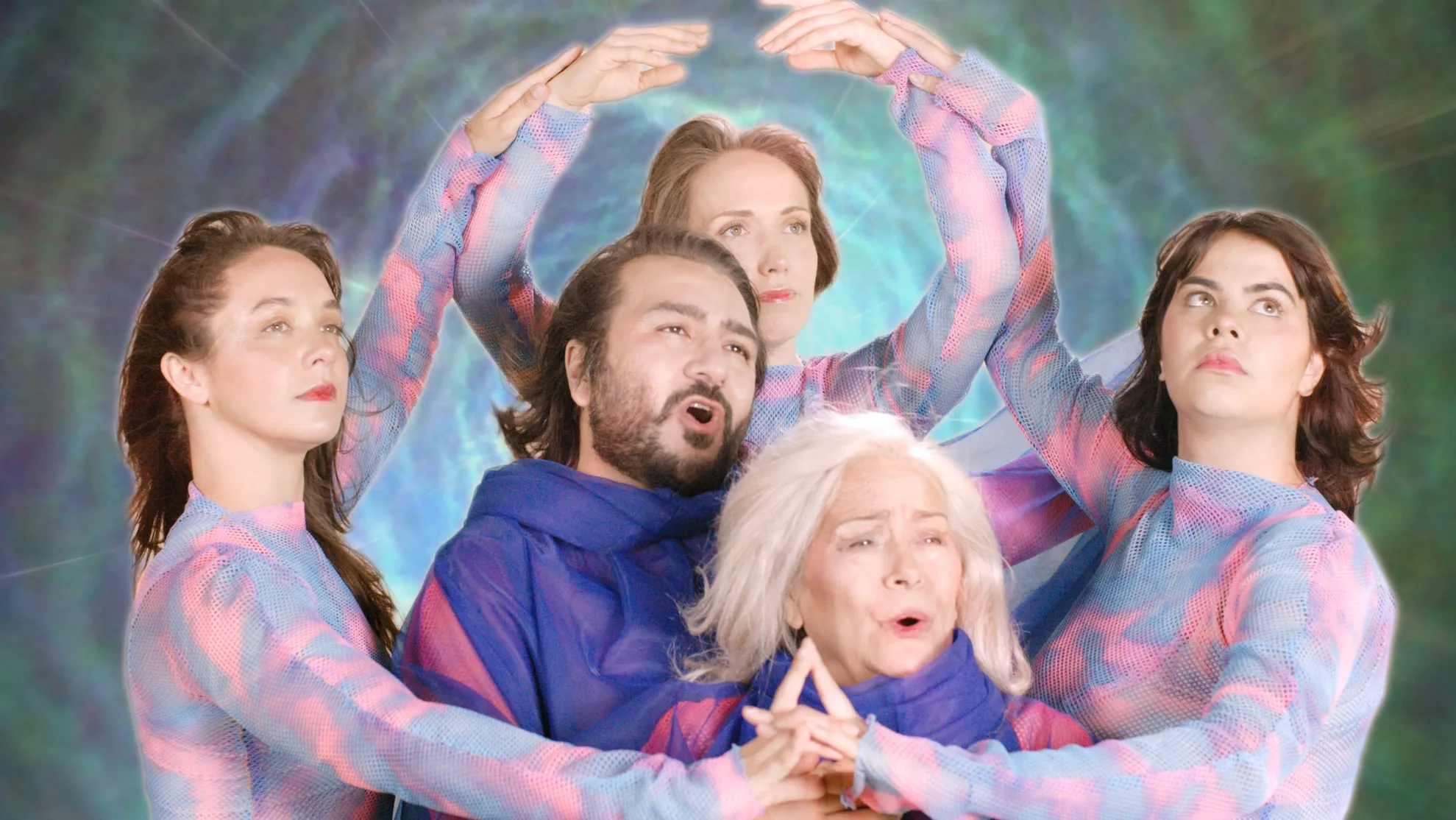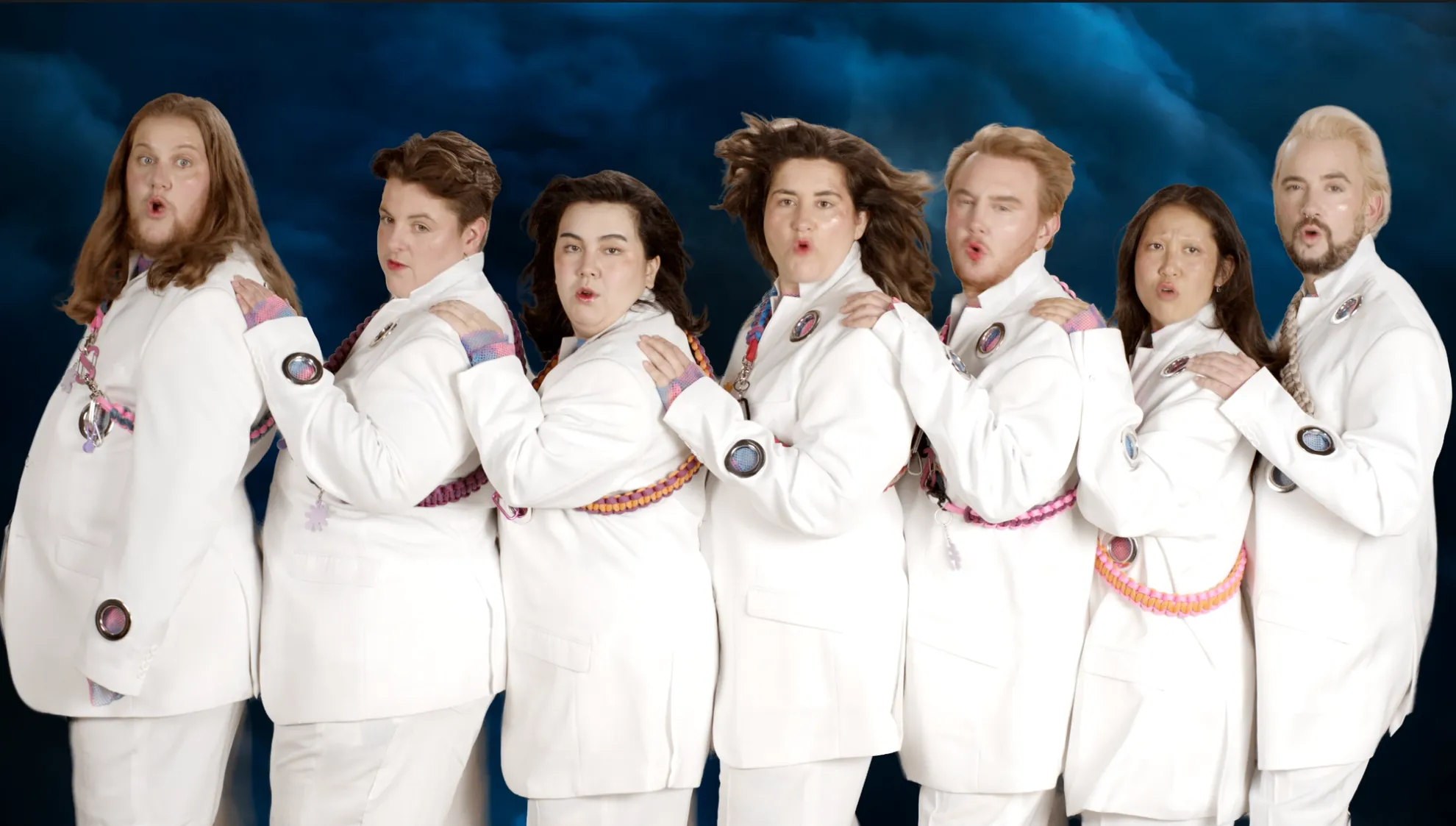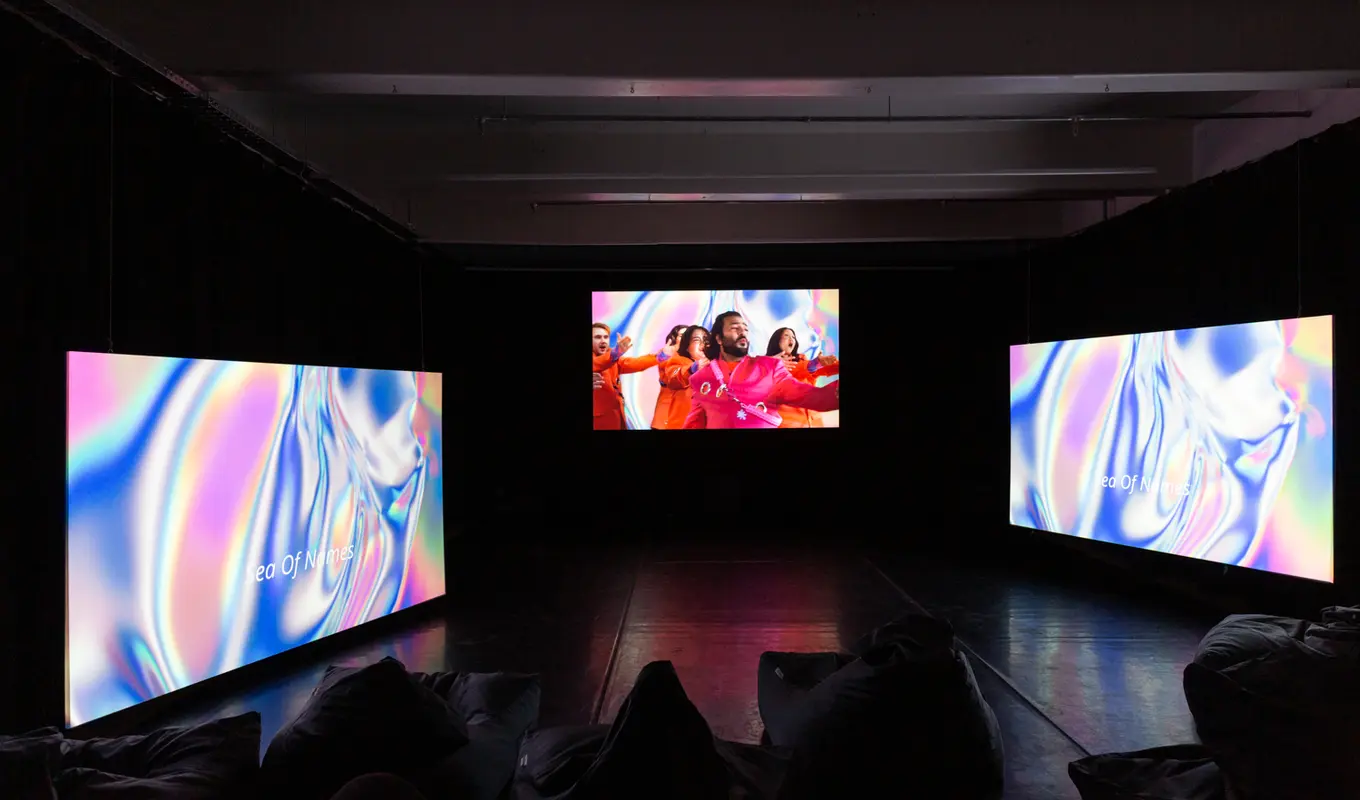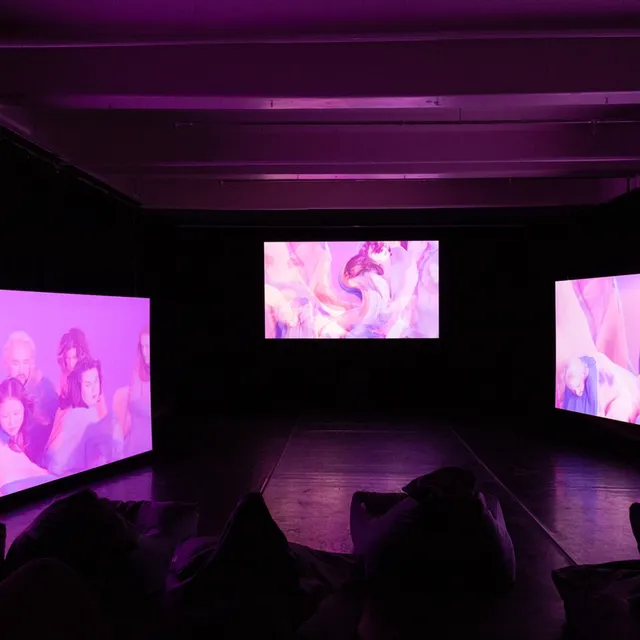Sebastian Henry-Jones
“HOSSEI: THUNDERBLOOM”
Language creates reality. When I tell you a story, it might not be true.
In the late 17th century, German physicist and musician Ernst Chladni developed a way to make sound visible to the human eye. Lightly covering a metal plate with sand, he found that by running a violin bow against its edge, that the sand would move and settle into different patterns depending on the kind of vibration, known as a Chladni figure. His discovery was evidence that sound has a material, resonant origin and presence, and furthermore, an influence on the material world.
“The medium is the message” is a popular term coined by Marshall Mcluhan in the 1960s. The phrase describes the idea that it is not so much the content of a form of communication that is most impactful upon someone receiving it, but rather the form of communication itself. As such the subject matter of a film (Titanic, robots) isn’t as significant as the invention of film itself and the way it subverts our conception of time and space.

Emotions are created by our brain as a way of making meaning. Through the interpretation of bodily sensations (touch, vision, scent, hearing, taste) we are able to engage with the world. This is called ‘making sense.’ Our senses are directly involved in producing emotion, and our emotions help us to make sense of the world.
The voice produces meaning through rhythm and sound. Beyond being a natural organ that produces sound through vibration, the larynx then is also an instigator in the production of emotions.
We have the literal and figurative ability of ‘touching’ each other with language and through speech. So when I tell a story, whether or not it is true: What is significant is the transmission of speech itself.

Consider then the social power of voice between two people, in a group, in places where it is not usually permitted to speak or from people who are most usually silenced.
The medium for HOSSEI’s THUNDERBLOOM is not so much sound or video as it is emotion, and the critical importance of feeling emotional within a journey of healing. In this way, HOSSEI’s practice is one of repair. THUNDERBLOOM is a journey between the form and the meaning of sound, from acoustic sciences to the emotion of poetry, translating the voice and its positioning within familial relationships into emotional affect that is material.

Sebastian Henry-Jones is the Curator at West Space. His curatorial approach is led by an interest in DIY thinking, and situated in the context provided by the gentrification of Sydney and Melbourne’s cultural landscapes.


